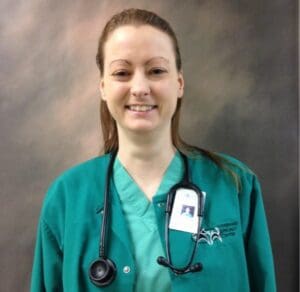By Brooke Davis, BS, CVT, LVT, VTS (ECC)
 We are hearing a lot about the worldwide need for ventilators lately because so many people are having trouble breathing on their own due to COVID-19. Mechanical ventilation is needed with respiratory failure or when a disease process is affecting the lungs so badly that you are unable to get enough oxygen into your lungs. It is also needed when the work of breathing is so strenuous that your respiratory muscles stop working. A mechanical ventilator takes over breathing for you completely.
We are hearing a lot about the worldwide need for ventilators lately because so many people are having trouble breathing on their own due to COVID-19. Mechanical ventilation is needed with respiratory failure or when a disease process is affecting the lungs so badly that you are unable to get enough oxygen into your lungs. It is also needed when the work of breathing is so strenuous that your respiratory muscles stop working. A mechanical ventilator takes over breathing for you completely.
We use these on animals as well when needed. As we all know, we really want to avoid getting to that point. There are many negative complications associated with mechanical ventilation and chances of long-term survival go down after respiratory failure.
There are additional tools we can use to avoid mechanical ventilation. Of course, when breathing difficulty becomes more than you can deal with at home, traditional oxygen therapy is started. For you, this would be when they place those nasal prongs in your nose and have that cold oxygen blowing through them.
We do something very similar in animals or place them in an oxygen cage. When you are struggling even with oxygen supplementation something more must be done. Options include mechanical ventilation, or in people that may include a CPAP or BIPAP machine as well as a high flow oxygen therapy unit.
What is High Flow Oxygen Therapy?
High flow oxygen therapy is delivered through a unit that blends medical air with oxygen (much like a ventilator) at much higher doses than available with traditional oxygen therapy (nasal oxygen or oxygen cages). The machine that delivers this therapy does not breathe for the patient completely as a ventilator would, but it does relieve some of the work of breathing.
It is particularly useful for patients that need more support than just traditional oxygen therapy, but may not need to go on a ventilator. It is also helpful for patients where the ventilator may be contraindicated, support waking up from anesthesia, or support during airway procedures. Sometimes the patient may be mildly sedated, but they do need to be able to breathe some on their own. This therapy is fairly new to human and veterinary medicine.
This is a very helpful extra tool in treating respiratory difficulty and disease.
Brooke Davis is a Certified Veterinary Technician and a Veterinary Technician Specialist in Emergency and Critical Care. Brooke shares her knowledge throughout the Chicagoland Veterinary community by providing lectures for other veterinary technicians. She also trains and mentors members of her team.
